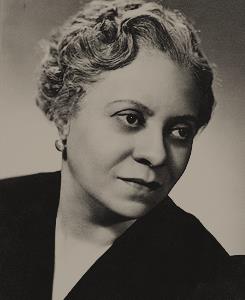
Florence Price
Music Period: 20th Century and beyond
Location: America
Claim to Fame: Having her Symphony in E minor performed by the Chicago Symphony Orchestra, an all-male orchestra.
Florence Price was born in Little Rock, Arkansas, to an African-American middle class family in 1887. She grew up in a household that cherished classical music, art and literature. As a result, the family believed them to be a normal part of growing up. Florence’s mother, who had been a schoolteacher before her marriage, introduced her to music and gave Florence her first piano lessons. This led Florence to give her first piano performance at the age of four, and later she took up the organ and violin. From an early age, she was composing, with one of her pieces going on to be published before she was 11 years old.
After leaving school at 14, Florence headed to the New England Conservatory of Music in Boston. She double majored in piano and pedagogy and was one of the very few African-American students at the conservatory at the time. At 19, Florence was one of only 58 students from the Class of 1906 to graduate. After five years of hard work, she moved back home to Little Rock.
The community Florence had grown up with, however, was no more. Racial segregation had taken over as the new norm instead. The racial landscape throughout America was changing and Florence struggled to find employment as a musician. After the Arkansas Music Teachers’ Association (an all-white group) rejected her application to join, Florence created the Little Rock Club of Musicians. For the next few years, she taught music at a stream of different local schools for black students. Florence then moved to Atlanta where she became head of the Clark University music department. She also took a key role in creating the university’s glee clubs.
Florence returned home in 1912 and married lawyer Thomas J. Price. They had two daughters, and Florence stopped performing in public institutions. She did, however, give private violin, piano, and organ lessons at home, as well as continue to compose music that won magazine competitions.
The pivotal moment came in 1927 when Florence moved to Chicago. This decision came after the racial violence in her hometown escalated, and the need to escape became more and more necessary. Chicago changed her career for the better. Florence studied composition, taking a variety of courses at different institutions, and wrote music for radio commercials alongside her studies. To support her family, she continued to give private lessons, and wrote teaching pieces for the piano. Despite her good fortunes, the Great Depression hit the family hard. Thomas, her husband, struggled to find work and when financial stresses became too much, he became abusive. Florence took her children and filed for divorce – a bold move for any woman in the 1930s.
There is no doubt mind that Florence continued to grow professionally. In 1932, she won first prize at the Wanamaker Competition for her Symphony in E minor. The symphony was the definitive performance piece a year later at the Chicago World Fair when the Chicago Symphony Orchestra, an all-male orchestra, performed the piece for the first time.
The music Florence composed often used aspects of African-American folk music. Juba dance rhythms and syncopated beats can often be heard in her compositions. One piece that includes these rhythms is her Concerto in One Movement in D minor for piano and orchestra. A spiritual-like melody opens the piece. Florence was the soloist when it was first performed in 1934. The piece was performed again later the same year by Women’s Symphony Orchestra of Chicago and was conducted by Ebba Sundstorm.
Florence continued to compose, including concertos, symphonies, overtures, and a suite for orchestra, until she died at the age of 65 in 1953. None of these works were published, and the majority still only survive in manuscript form. When searching for her music, it quickly becomes clear that only three out of her 300 or so compositions have been published to commercial buyers. These are her Sonata in E Minor for piano and two songs in a compilation publication released back in 1984. It is shocking to see, especially considering the impact this incredible woman had on the music industry in the early twentieth century.
To find out more about Florence Price and her life, check out Women’s Voices for Change’s article on her, and Bob McQuiston’s piece at NPR.
-Claire Amundson
Junior Girl
Girl Museum Inc.
